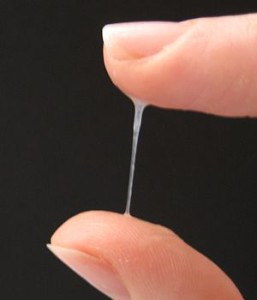Sharing is caring, they say. And women, by nature, are a caring lot. But the one thing we do not always share (but almost always care) about is when something goes wrong with our tender region. Blame shame, guilt, stigma or whatever it may be, it is not something that is high on the list of topics discussed during coffee break or Sunday brunch with the girls. Yet, it still deserves attention. Therefore, for the pure sake of enlightenment, let’s dwell more on the matter of vaginal discharges.
Vaginal discharges are actually a common complaint often seen at primary care centers. Now, first things first, ALL women will get vaginal discharge at some point or another in their lifetime. It is not something that someone should be ashamed of. In fact, more often than not, it may be something pretty normal; something that is due to our physiologic (normal) functions.
The discharge is usually white or clear, and has no foul-smelling odour. A normal vaginal discharge is often called physiologic vaginal discharge.
A woman’s body is unique, in the sense that it is somehow governed by hormones. These hormones go through cyclical changes (which plays a role in fertility and menstrual cycles). Therefore, a physiologic vaginal discharge here simply means that a woman may experience mucous discharge that is influenced by the hormones in her body. Other than her own body processes, a woman may also be affected by discharges if she was taking hormonal contraception, which would again, in turn, affect the hormone cycle in her body. Over time, as she grows older, the hormones would decrease and would thus decrease her chances of getting vaginal discharges.
“How would I know what’s normal or not? Pfft, I’m not a doctor..” is another common phrase heard. Kudos to those women who have the instinct to know when they should seek medical attention for their condition; but for those who may be a little clueless, here is a list of symptoms that should have you clearing your schedule to see your doctor:
- Increasing amount of discharge.
- Discolouration: The discharge may range from yellow to greenish.
- Change in consistency: The discharge may be clumpy.
- Foul-smelling discharge.
- Blood-stained discharge.
- Presence of other associated symptoms such as fever, itching, soreness, painful peeing (urination), lower abdominal pain, unexplained weight loss, pain on having sexual intercourse or bleeding after sexual intercourse.
So what does this list mean, exactly? It is basically a list of warning signs that indicate the need to look deeper into the problem at hand. However, what it truly indicates is that the vaginal discharge deserves medical attention, as it may be one of the following conditions:
- Non-sexually-transmitted infection: There are various infections that may cause vaginal discharges, but these are usually associated with other symptoms, depending on the type of microorganism involved. Common ones include Candidiasis and Bacterial vaginosis infection.
- Candidiasis is a fungal infection that would see someone suffering from clumpy, whitish discharge, along with itching and burning sensation. Chances of getting this infection is higher if a woman had diabetes mellitus, is taking antibiotics or under stress.
- Bacterial vaginosis usually causes an excessive amount of greyish discharge with a fishy odour. It is not commonly associated with itchiness.
- Sexually-transmitted infection (STI): Infection with organisms such as Neisseria gonorrhea (causing gonorrhea) and Chlamydia trachomatis (causing chlamydia).
- Pelvic Inflammatory Disease (PID): This is a broad term for infection that may affect the reproductive organs of a woman, and the term covers all sorts of infection, commonly sexually transmitted infections. However, it may also be caused by spread of infection from other sources, such as via the blood, and is also associated with use of intra-uterine device for contraception purposes.
- Cancer: Cervical cancer can present with other symptoms, but it is also common to see someone being affected with vaginal discharge, typically the brownish or bloody discharge type.
- Other common causes include retained tampon or condom, chemical irritation, allergic responses, atrophic changes (degeneration due to age) and ectropion (part of the cervix protrudes out into vagina).
There are other causes of vaginal discharges. However, at this stage, the most important point is to be aware of the warning signs. The next step would be to bring yourself to be medically checked, which entails a thorough question-and-answer session by your doctor followed by a physical examination. He or she may also decide to run some tests to determine the exact diagnosis in order to give you the best treatment available. For those who are reluctant to get yourself checked for whatever reasons, rest assured that it would be the same everywhere, and your doctor is not doing something out of the ordinary, only your best interests at heart.
If you have not had vaginal discharge or may have recovered from the condition, there are steps which may reduce your chances of getting it. Good personal habits and hygiene are the first line of protection you will need in this battle. Keeping your tender areas clean and dry are crucial. Always remember safe sex practices such as use of condoms to avoid sexually transmitted diseases and be aware of your partner’s sexual behavior.
However, the bottom line is to be aware of the changes taking place in your body and should there be a need, seek medical advice as soon as you possibly can. So the next time a friend, a relative or you yourself are somehow in this territory, head them back to this site and see if it is something you need to be worried about.
Dr Ayu Akida is a Public Health specialist. Her area of interest is family health, especially women’s health and infectious diseases. Find out more about her at The Team (Columnist) page.
References:
- Spence, D, & Melville, C 2007, ‘Vaginal discharge’, BMJ (Clinical Research Ed.), 335, 7630, pp.1147-1151, MEDLINE with Full Text, EBSCOhost, viewed 21 October 2013.
- French, L, Horton, J, & Matousek, M 2004, ‘Abnormal vaginal discharge: what does and does not work in treating underlying causes’, The Journal Of Family Practice, 53, 11, pp. 890-894, MEDLINE with Full Text, EBSCOhost, viwed 21 October 2013
[This article belongs to The Malaysian Medical Gazette. Any republication (online or offline) without written permission from The Malaysian Medical Gazette is prohibited.]




How often iud can cause infection? Who will be prone to getting an infection from IUD? Tq.
Dear Ana,
Use of IUD is relatively safe, but there is an increased risk of infection in the first 3 weeks after insertion of the IUD. After that, the risk is pretty low. Having said that, personal hygiene and good personal habits are still very important to ensure your risk of infection are kept at a minimum.
Hope that helps. Warmest regards.